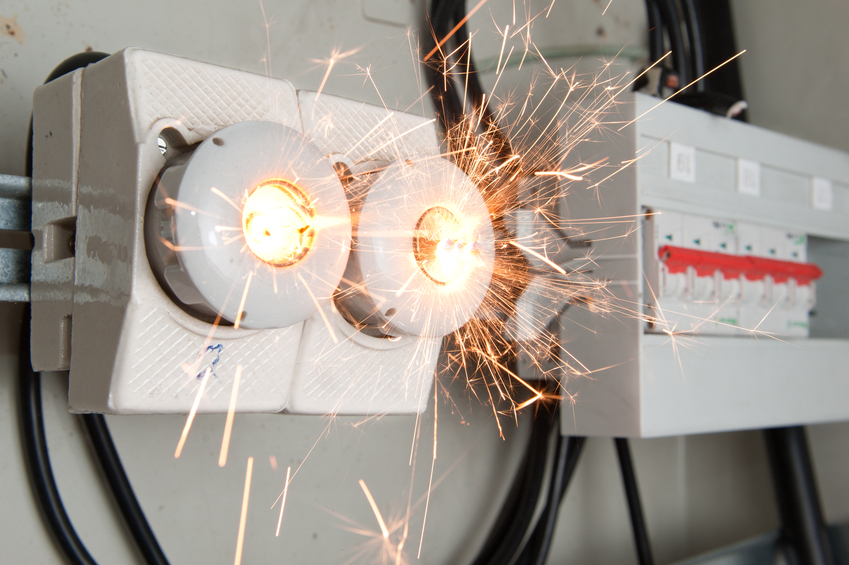Delaware Electrical and Ethics 24 PDH Discount Package 2
Courses in this Package
Introduction to Transformers (E05-013)
Electrical Engineering Fundamentals: Motors, Generators & Power Distribution (E08-003)
Electrical Test Instruments and Measuring Devices (E02-003)
Electrical Safety (E06-005)
Engineering Ethics Case Study: The Challenger Disaster (LE3-001)

This online engineering PDH course describes the basic concept, function, types, and the different components of electrical transformers.
A transformer is an electrical equipment that transfers energy from one circuit to another by electromagnetic induction. They are often used to convert between high and low voltages (step-up or step down). Transformers and their components vary depending on the application and are available in several different configurations.
This 5 PDH online course is applicable to electrical and mechanical engineers, maintenance personnel and other technical staff who are interested in gaining a better understanding of transformers.
This PE continuing education course is intended to provide you with the following specific knowledge and skills:
- Understanding the function of transformers and their physical characteristics
- Familiarizing with the different components of transformers
- Learning how to identify a transformer as step-up or step-down and state the current ratio of a transformer when given the turns ratio
- Learning the mathematical relationship between the power in the primary and the power in the secondary of a transformer
- Understanding the basics of the different types of transformers
Upon successful completion of the quiz, print your Certificate of Completion instantly. (Note: if you are paying by check or money order, you will be able to print it after we receive your payment.) For your convenience, we will also email it to you. Please note that you can log in to your account at any time to access and print your Certificate of Completion.

This online engineering PDH course introduces the reader to the concept of load factor, its role in power quality considerations and electrical energy cost reduction through peak shaving. Significance of electrical equipment service factor and voltage regulation of power distribution systems is highlighted. Electric power bill calculation in residential, commercial and industrial arena is illustrated.
DC and AC motors and generators are introduced. Basic principles and equations governing the operation and performance of electric motors are presented. Common calculations involving electric motors are covered, and illustrated through examples and self-assessment problems. The reader is introduced to the concepts of induction motor slip and the roles that slip and frequency play in determination of the motor shaft speed.
An exploratory tour of power distribution and safety equipment is conducted through the review of motor control center (MCC), power switchgear, electronic safety devices and variable frequency drives (VFD). Pictures and diagrams are used in this discussion to give the reader a "hands- on" feel of common electrical and electronic equipment.
This 8 PDH online course is applicable to engineers of all disciplines, as well as technicians, facilities managers and executives who are not intimately familiar with electrical engineering principles and practices.
This PE continuing education course is intended to provide you with the following specific knowledge and skills:
- Learning how to calculate load factor, service factor, motor slip and motor shaft speed
- Learning how to compute voltage regulation and electrical power bills
- Learning how DC and AC motors and generators are constructed and their operation
- Familiarity with power distribution and control equipment (switches, breakers, etc.)
- Introduction to state of the art electrical and electronic safety devices
In this professional engineering CEU course, you need to review the course document titled, "Electrical Engineering Fundamentals: Motors, Generators and Power Distribution" which is based on the principles in the book Electrical Engineering for Non-Electrical Engineers, S. Bobby Rauf, Fairmont Press, 2013.
E08-003 - APPENDICES
Upon successful completion of the quiz, print your Certificate of Completion instantly. (Note: if you are paying by check or money order, you will be able to print it after we receive your payment.) For your convenience, we will also email it to you. Please note that you can log in to your account at any time to access and print your Certificate of Completion.

This online engineering PDH course describes electrical measuring devices such as voltmeters, ammeters, ohmmeters and wattmeters. It also describes test equipment such as multimeters and meggers. It discusses the electrical parameters measured and the principles of operation of common instruments.
This 2 PDH online course is applicable to electrical and computer engineers, design and construction personnel, technical staff and facility operators who are interested in gaining a better understanding of electrical test instruments and measuring devices.
This PE continuing education course is intended to provide you with the following specific knowledge and skills:
- Understanding meter movements
- Learning about the various electrical measuring devices (voltmeters, ammeters, ohmmeters and wattmeters)
- Learning about the various electrical test equipment (multimeters and meggers)
In this professional engineering CEU course, you need to review Module 14, "Test Instruments and Measuring Devices" of the Department of Energy Publication DOE-HDBK-1011/2-92, "Electrical Science".
Upon successful completion of the quiz, print your Certificate of Completion instantly. (Note: if you are paying by check or money order, you will be able to print it after we receive your payment.) For your convenience, we will also email it to you. Please note that you can log in to your account at any time to access and print your Certificate of Completion.

This online engineering PDH course describes the hazards of electrical work and basic approaches to working safely.
Whenever working with power tools or on electrical circuits, there is a risk of electrical hazards, especially electrical shock. Anyone can be exposed to these hazards at home or at work. Workers are exposed to more hazards because job sites can be cluttered with tools and materials, fast-paced, and open to the weather. Risk is also higher at work because many jobs involve electric power tools.
Electrical trades workers must pay special attention to electrical hazards because they work on electrical circuits. Coming in contact with an electrical voltage can cause current to flow through the body, resulting in electrical shock and burns. Serious injury or even death may occur. As a source of energy, electricity is used without much thought about the hazards it can cause. Because electricity is a familiar part of our lives, it often is not treated with enough caution. As a result, an average of one worker is electrocuted on the job every day of every year!
This 6 PDH online course is applicable to electrical and mechanical engineers, electricians, plant operators, construction personnel and others seeking an understanding of the basics of electrical system safety.
This PE continuing education course is intended to provide you with the following specific knowledge and skills:
- Understanding the dangers of electricity
- Understanding the dangers of electric shocks
- Familiarizing with the burns caused by electricity
- Learning how to recognize, evaluate, and control hazards
- Knowing how to work safely
Once you complete your course review, you need to take a multiple-choice quiz consisting of thirty (30) questions to earn 6 PDH credits. The quiz will be based on the entire document.
Upon successful completion of the quiz, print your Certificate of Completion instantly. (Note: if you are paying by check or money order, you will be able to print it after we receive your payment.) For your convenience, we will also email it to you. Please note that you can log in to your account at any time to access and print your Certificate of Completion.

This online engieering PDH course provides instruction in engineering ethics through a case study of the Space Shuttle Challenger disaster. The minimum technical details needed to understand the physical cause of the Shuttle failure are presented. The disaster itself is chronicled through NASA photographs. Next the decision-making process, especially the discussions occurring during the teleconference held on the evening before the launch, is described. Direct quotations from engineers interviewed after the disaster are used to illustrate the ambiguities of the data and the pressures that the decision-makers faced in the months and hours preceding the launch. The course culminates in an extended treatment of six ethical issues raised by Challenger.
This 3 PDH online course is intended for all engineers who are interested in gaining a better understanding about the ethical issues that lead to the Challenger disaster and how they could have been avoided.
This PE continuing education course is intended to provide you with the following specific knowledge and skills:
- Common errors to avoid in studying the history of an engineering failure: the retrospective fallacy and the myth of perfect engineering practice
- Shuttle hardware involved in the disaster
- Decisions made in the period preceding the launch
- Ethical issue: NASA giving first priority to public safety over other concerns
- Ethical issue: the contractor giving first priority to public safety over other concerns
- Ethical issue: whistle blowing
- Ethical issue: informed consent
- Ethical issue: ownership of company records
- Ethical issue: how the public perceives that an engineering decision involves an ethical violation
In this professional engineering CEU course, you need to review the course document titled, "Engineering Ethics Case Study: The Challenger Disaster".
Upon successful completion of the quiz, print your Certificate of Completion instantly. (Note: if you are paying by check or money order, you will be able to print it after we receive your payment.) For your convenience, we will also email it to you. Please note that you can log in to your account at any time to access and print your Certificate of Completion.